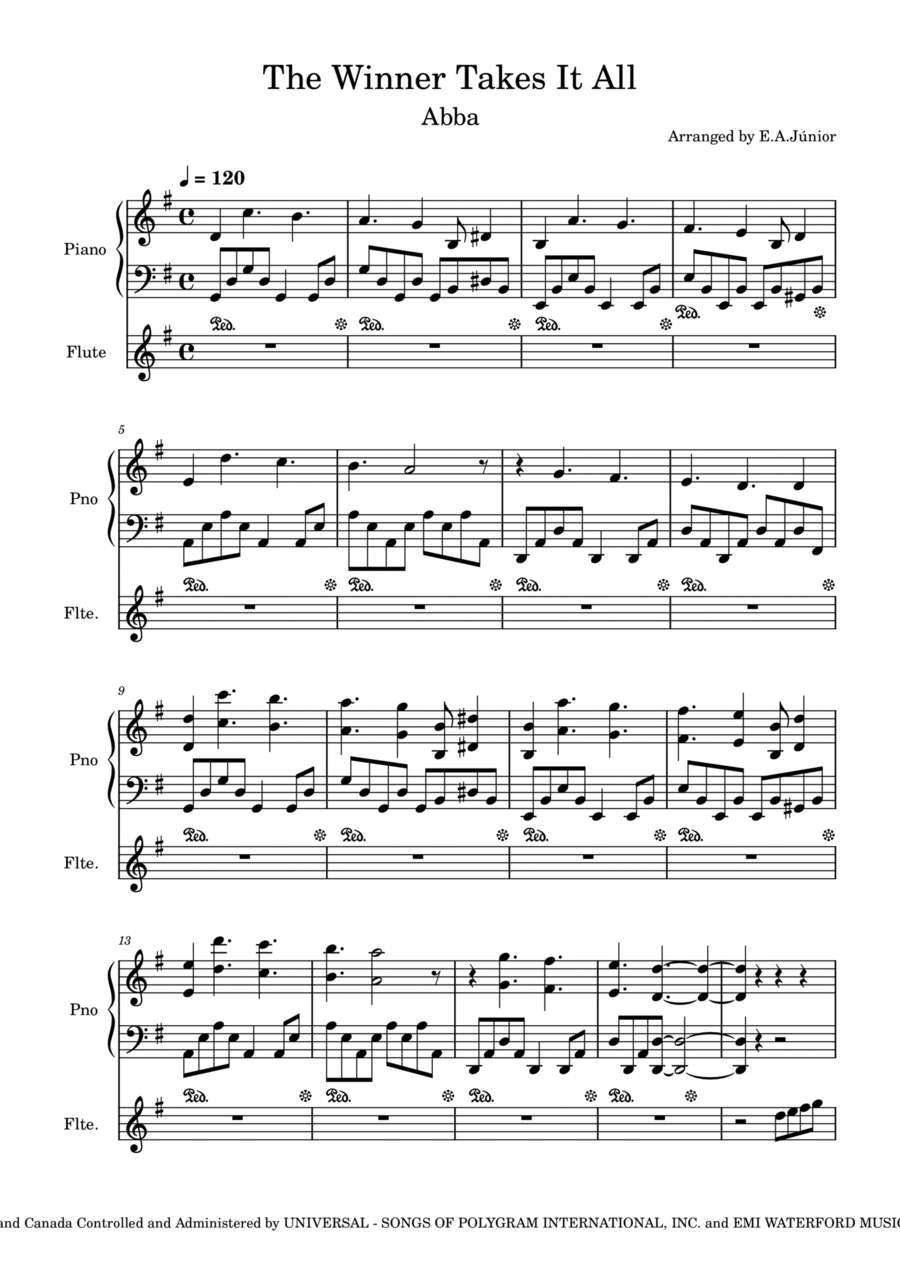Flute,Piano - Level 3 - Digital Download SKU: A0.1148620 By ABBA. By Benny Andersson and Bjorn Ulvaeus. Arranged by E.A.Júnior. Broadway,Classical,Disco,Film/TV,Musical/Show,Pop. Score and part. 13 pages. Elias Jr #748763. Published by Elias Jr (A0.1148620). Complete arrangement of the song The Winner Takes It All for Flute and Piano, perfect arrangement for beginner and intermediate musicians in the respective instruments, easy interpretation arrangement, solo score for both parts included. The, Winner, Takes, All, ABBA, Gold, sheet, music, Flute, Winner Takes All - ABBA Gold (sheet music) Flute #TheWinnerTakesItAll #ABBA #Flute.
